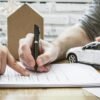Introduction: A Day That Turned into a Nightmare
On what was supposed to be a routine flight, excitement and anticipation filled the cabin as passengers settled into their seats, eager for their journey. The hum of the engines, the polite conversations, and the friendly faces of the flight crew all contributed to an air of normalcy. However, this seemingly ordinary day was about to take a drastic turn, transforming into a harrowing ordeal that none on board would soon forget.
As the plane ascended into the skies, the initial excitement gradually gave way to a calm, with passengers engrossed in their books, movies, or simply gazing out the windows. But tranquility was shattered without warning. Turbulence, which initially seemed typical, quickly escalated into a severe, gut-wrenching experience. The aircraft was violently tossed, and the cabin lights flickered ominously. Panic began to ripple through the rows.
Amidst the chaos, the cabin crew scrambled to maintain order, their faces betraying the gravity of the situation. The once reassuring safety demonstrations now seemed a distant memory as the reality of their jeopardy became apparent. Fear and confusion gripped everyone on board. Passengers clung to their seats, praying for relief, as screams of terror echoed throughout the cabin.
The terrifying ordeal continued for what felt like an eternity, with every lurch and drop of the plane intensifying the collective dread. Eventually, the turbulence subsided, but the emotional scars remained. This blog post delves into the firsthand accounts of those who lived through this nightmare, offering a glimpse into their experiences and the expert insights that followed.
The Calm Before the Storm: Takeoff and Early Moments
The initial moments of the ill-fated flight began in a manner that could be described as nothing short of routine. Passengers settled into their seats, some engaging in light conversation while others perused in-flight magazines or adjusted their seatbelts. The cabin crew, impeccably dressed in their uniforms, moved with practiced efficiency, ensuring that all safety protocols were followed to the letter. The ambiance within the aircraft was one of calm and anticipation, as travelers prepared for their journey.
As the plane ascended, a sense of tranquility enveloped the cabin. The hum of the engines provided a soothing backdrop, and the occasional ding of the seatbelt sign was a reminder of the structure and order that governed air travel. Flight attendants made their rounds, offering beverages and snacks, and their polite interactions with passengers helped maintain an aura of normalcy. Conversations varied, from business discussions to holiday plans, adding to the diverse tapestry of experiences on board.
For many, the flight was a brief respite from their daily lives, a momentary escape from the hustle and bustle. Windows revealed a panoramic view of the sky, and the sight of clouds drifting by added to the serene atmosphere. The aircraft’s interior was bathed in soft, ambient lighting, contributing to a sense of comfort and security. Passengers reclined in their seats, some even closing their eyes to rest or immersing themselves in books and movies.
In these early moments, the flight seemed like any other—an uneventful journey from one point to another. There was no indication of the chaos that would soon ensue, no premonition of the terror that lay ahead. The stage was set for a stark contrast between the current peacefulness and the impending turmoil, highlighting the unpredictability of the ordeal that passengers were about to face.
Panic Ensues: The First Signs of Trouble
The initial signs of trouble on the ill-fated flight began subtly but soon escalated into a situation that left passengers in sheer terror. According to multiple eyewitness accounts, the first indication that something was amiss came from the aircraft’s unexpected turbulence. Although minor turbulence is not uncommon, the intensity and duration of the shaking were unusual, causing unease among those onboard. Passengers reported hearing abnormal sounds, such as loud bangs and grinding noises, which only heightened their anxiety.
As the turbulence grew more severe, the cabin crew attempted to maintain composure, but their forced smiles and hurried movements betrayed their own apprehension. The turning point came when the captain’s voice crackled over the intercom. His strained tone was a stark contrast to the typically calm and reassuring announcements. “Ladies and gentlemen, we are experiencing some technical difficulties,” he began, which immediately sent a ripple of fear through the cabin. The use of terms like “technical difficulties” did little to comfort the passengers, many of whom clutched their armrests and exchanged worried glances.
Passengers have recounted the palpable sense of dread that enveloped the cabin. One witness, seated near the middle of the plane, described how the atmosphere shifted from mild concern to outright panic. “People started whispering to each other, asking if anyone knew what was happening,” they said. “You could see the fear in everyone’s eyes.” Another passenger mentioned how the uncertainty was the most harrowing part. “Not knowing what was going on made it so much worse. You could tell that even the flight attendants were scared, and that’s when you knew it was serious.”
Amid the growing chaos, some passengers attempted to calm their fellow travelers, while others began to prepare for the worst. The flight, which had started as a routine journey, quickly transformed into a nightmare scenario. The initial confusion and fear set the stage for the harrowing events that would unfold, leaving an indelible mark on all who experienced it.
Chaos in the Cabin: Screams and Desperation
The cabin erupted into chaos as the gravity of the situation became apparent. Passengers were gripped by a palpable sense of panic and fear. Many screamed in sheer terror, while others broke down into uncontrollable sobs. “I have never experienced anything like it,” recalled Maria Hughes, a passenger seated in the middle of the plane. “People were crying, screaming, and praying. It was absolute pandemonium.”
Amidst the chaos, some passengers attempted to offer comfort to those around them. John Matthews, who was traveling with his family, described the scene: “I tried to calm my kids, but the noise and the fear were overwhelming. Everyone was on edge, and it felt like an eternity.” The emotional toll was evident on every face, as people clung to each other, seeking solace in shared despair.
The flight attendants and crew members worked tirelessly to manage the situation, though it was no easy task. “We were trained for emergencies, but nothing could prepare us for the sheer level of hysteria,” said Sarah Jenkins, a flight attendant who was on duty. “We did our best to reassure passengers and maintain order, but it was incredibly challenging.” The crew’s efforts were focused on ensuring the safety and well-being of everyone on board, despite the overwhelming circumstances.
Efforts to maintain calm included repeated announcements over the intercom, asking passengers to remain seated and fasten their seatbelts. The crew moved through the aisles, offering words of reassurance and attempting to address individual concerns. “They were doing everything they could, but the fear was just too great,” noted Hughes. “It was a situation none of us ever imagined being in.”
The chaos within the cabin was a testament to the profound impact of fear and uncertainty on human behavior. As passengers clung to loved ones and strangers alike, the sense of desperation was unmistakable, creating a harrowing atmosphere that would linger long after the ordeal had ended.
A Glimmer of Hope: Emergency Response and Crew Actions
As the catastrophic events unfolded onboard, the flight crew’s swift and decisive actions became a beacon of hope for the terrified passengers. Demonstrating exceptional professionalism and composure, the crew immediately activated emergency protocols to manage the crisis. Their extensive training and experience were evident as they navigated through the chaos with poise and determination, ensuring that every possible measure was taken to stabilize the situation.
Amidst the panic, the captain’s voice came over the intercom, providing clear and concise instructions to the passengers. His calm demeanor and reassuring tone played a vital role in mitigating the fear that had gripped the cabin. The flight attendants, too, were instrumental in maintaining order, guiding passengers to adopt protective positions and assisting those in need. Their unwavering dedication to passenger safety was both commendable and comforting in such a dire scenario.
The emergency response did not end within the confines of the aircraft. As the plane made an urgent descent, ground emergency services were promptly alerted and prepared for the aircraft’s arrival. Firefighters, medical personnel, and airport security teams were on standby, ready to spring into action the moment the plane touched down. The seamless coordination between the flight crew and ground responders exemplified a textbook emergency response, showcasing the efficacy of their joint efforts in a high-stress situation.
Passengers later recounted their gratitude for the crew’s heroic actions. Many praised the flight attendants for their calm and collected demeanor, noting how their presence provided a sense of security during the ordeal. In the face of unimaginable fear, the crew’s bravery and professionalism shone brightly, serving as a testament to their unwavering commitment to passenger safety. Their actions not only stabilized the immediate crisis but also left an indelible mark on the hearts of those they protected.
The Aftermath: Safe Landing and Passenger Relief
The moments leading up to the safe landing were fraught with tension and anticipation. As the aircraft descended, the cabin was filled with a palpable sense of anxiety. Passengers clung to their armrests, their faces etched with worry, as they awaited the outcome of a situation that had escalated rapidly. The crew’s calm yet urgent directives provided some semblance of order amidst the chaos, but the uncertainty lingered in the air.
When the wheels finally touched the runway, a collective sigh of relief swept through the cabin. The immediate sense of safety was almost tangible, as if a heavy weight had been lifted off everyone’s shoulders. Emergency personnel were already on standby, prepared for any contingencies. As the aircraft taxied to a halt, the doors were promptly opened, and medical teams swiftly boarded to assess and assist those in need.
Disembarking the plane was a surreal experience for many passengers. Some were visibly shaken, their eyes reflecting the ordeal they had just endured. Others moved with a dazed determination, eager to place their feet on solid ground. The reunions with loved ones were emotional, marked by tears of relief and tight embraces. In the terminal, families and friends gathered, their faces a mix of concern and joy, as they welcomed passengers back from what had been a harrowing journey.
As they processed the experience, passengers shared stories of fear, resilience, and the overwhelming gratitude they felt for the safe landing. The incident, though traumatic, also highlighted the professionalism of the flight crew and the efficiency of the emergency response teams. In the aftermath, the focus shifted to healing and reflection, as everyone involved began to come to terms with what had transpired.
Expert Insights: Analyzing What Went Wrong
The recent incident onboard the flight has drawn significant attention from aviation experts and safety analysts. To understand the series of events that led to this chaotic situation, experts have delved deeply into the potential causes and the responses by the crew and airline.
Dr. John Matthews, an aviation safety analyst, suggests that the primary issue may have been mechanical failure, specifically a malfunctioning hydraulic system. “Hydraulic failures can lead to loss of control and necessitate emergency procedures. This is a critical component that requires regular inspection and maintenance,” he explained. According to Dr. Matthews, airline protocols often include redundant systems to mitigate such risks, but in this case, it appears the redundancy might have been compromised.
Another potential cause highlighted by Captain Laura Davis, a commercial airline pilot with over 20 years of experience, is human error. “While mechanical issues are always a possibility, human factors cannot be ignored,” Davis stated. “Crew training and response to emergencies are pivotal in ensuring passenger safety. The reaction of the crew under such stressful conditions is crucial and can dictate the outcome of the situation.”
In terms of handling the crisis, industry experts like James Wilson, a former safety regulator, praised the cabin crew for their prompt response. “The crew’s ability to maintain calm and follow emergency protocols likely prevented a more severe outcome,” Wilson remarked. However, he also pointed out that the communication between the cockpit and the cabin crew needs to be reviewed to ensure better coordination in future incidents.
The airline involved has initiated a thorough investigation to identify the root cause and prevent recurrence. They have also committed to enhancing training programs and reviewing maintenance schedules. This incident underscores the importance of continuous improvement in aviation safety protocols.
From an industry perspective, this event serves as a stark reminder of the complexities involved in modern air travel. It highlights the need for rigorous maintenance, comprehensive training, and seamless communication to ensure passenger safety. By learning from such incidents, the aviation industry can strive to enhance its operational standards and prevent similar occurrences in the future.
Reflections and Takeaways: Passengers’ Perspectives
The harrowing experience aboard the ill-fated flight has left an indelible mark on the passengers. Many have shared that the ordeal offered profound lessons and insights, fundamentally altering their perceptions of air travel and personal safety. For most, the immediate psychological aftermath involved grappling with intense fear and anxiety, a natural response to having faced a life-threatening situation. Passengers reported experiencing nightmares, heightened vigilance, and an acute awareness of their vulnerability.
Despite the trauma, some individuals found positive takeaways from the experience. Many passengers have expressed a renewed appreciation for life and a deeper sense of gratitude for everyday moments often taken for granted. The crisis underscored the importance of resilience and the human spirit’s ability to overcome adversity. Witnessing the crew’s professionalism and the collective resolve of fellow passengers in the face of danger left a lasting impression, instilling a sense of community and solidarity.
For some, the incident has prompted a reevaluation of their views on air travel safety. Passengers are now more cognizant of safety protocols and the critical role of emergency preparedness. There has been an increased interest in understanding airline safety measures, with many committing to pay closer attention to pre-flight safety briefings and instructions. The ordeal highlighted the necessity of remaining calm, composed, and cooperative during crises, as these qualities can significantly impact outcomes.
The passengers’ reflections also shed light on the broader implications of such incidents on mental health. There is a growing recognition of the need for adequate psychological support post-trauma, and many have advocated for airlines to offer counseling services to affected passengers. The experience has fostered a dialogue about the importance of mental well-being and the resources available for those struggling to cope with the aftermath.
Ultimately, this tragic event has reinforced the resilience of the human spirit and the critical importance of preparedness and support in navigating unforeseen challenges. While the scars of the ordeal may linger, the lessons learned and the strength discovered serve as a testament to the passengers’ courage and determination to move forward.










